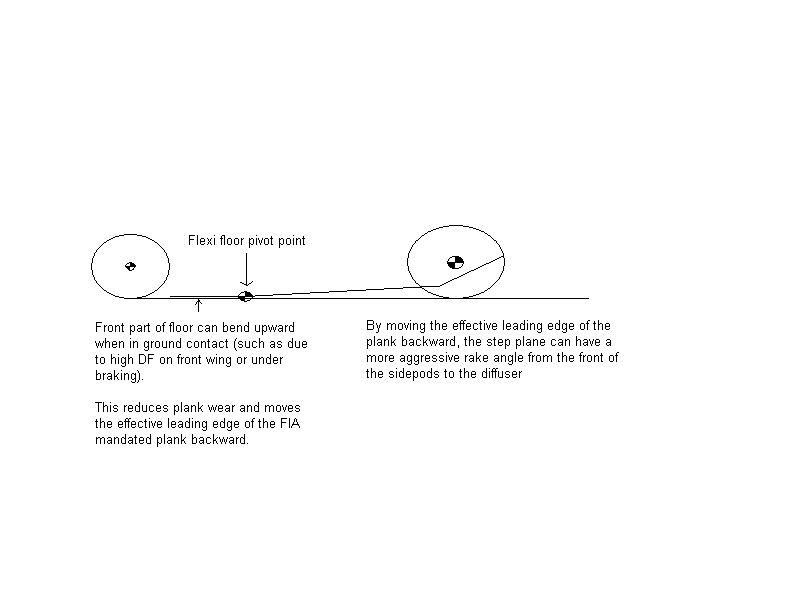tahadar wrote:the idea of stalling diffusers isn't absurd at all.
Trust me - its absurd.
tahadar wrote:
If you recall the 'hot' topics from a few years ago, you will remember that the whole concept of a flexible rear wing was to flex at high speed, resulting in the closing of the gap between elements. This effectively made the rear wing a highly cambered, single-element device as opposed to a 2- or 3- element one, resulting in stall. This reduced drag as a result and gave cars a higher top speed.
I know. It was actually a cyclic stalling as the 2nd element loaded and unloaded from the stall.
But the two are not comparable.
The diffuser stalls due to distance from the ground*, while the rear wing stalls purely based on air speed.
* this can be a result of simple aero load down a straight (dependant on airspeed), or compression due to bumps or track curvature.
You can control the stall due to airspeed only. But you cannot control the ride height (and rake angle( through a corner like eau rouge or 130R to the same tolerances.
PNSD - the reason the stall reduced drag is simply the load vector of the 2nd element. If we simplify it and say the aero load created from the pure aerofoil lift/downforce is normal to the chordline of the aerofoil itself, look at how steep the 2nd element is - probably at 60 or 70 degrees to the horizontal - so in effect, the majority of its 'downforce' is actually acting as drag.
Sounds strange, I know, but thats the way it is.


